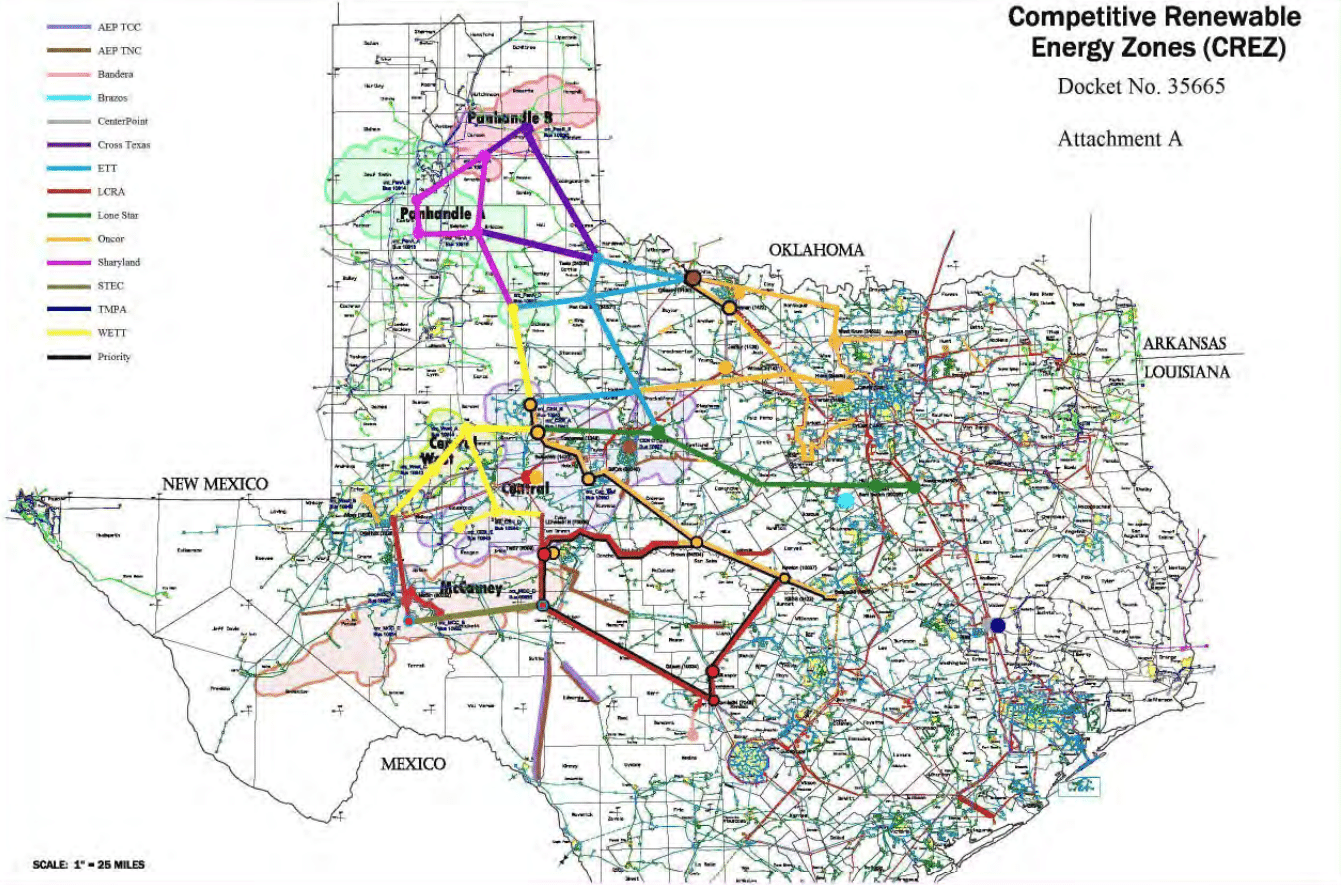Texas chose to build the nation’s only high voltage alternating current (HVAC) power line network, along with its competitive renewable energy zones (CREZ), whose express purpose was expanding renewable energy. This network was built to accommodate 18.5 GW of wind at a cost of $6.8 billion, with specific goals of lowering curtailment and transmission congestion.
When the grid was built, it was stated that any electricity generator would be able to connect at any point, and be able to move electricity anywhere else along the power grid at no additional costs. This has led to Texas becoming the United State’s largest wind electricity producer, and – if Texas were its own country – the sixth largest globally.

In the early summer of 2018, a Review of the Inclusion of Marginal Losses in Security-Constrained Economic Dispatch was filed with Public Utility Commission (PUC) of Texas. The document was submitted as major energy generators thought that the massive wind farms (and solar as well) ought to have to account for marginal losses of electricity as West and North Texas complete their transformation to regions where energy production dominates other land uses.
On January 17, the PUC ruled against the the motion. The PUC Chair – DeAnn T. Walker – submitting her thoughts (pdf) on the topic in a memorandum:
Although assigning marginal transmission losses is common in other markets and an efficient way to account for losses, I do not believe that the incremental benefit of applying marginal losses in the ERCOT market is worth the implementation cost and market disruption.
One major driver of this policy push is that historically, fossil generators heavily depended on the high demand periods during summer months. And now with heavy solar coming, it looks like that opportunity might be fading.
This past summer some peak of those prices hit, however, instead of prices holding at high numbers – wind power production was higher than predicted in certain moments:
Wind coming in quite above forecasts as @ERCOT_ISO moves into peak hours. Load still on track to set new all-time system-wide peak demand record.https://t.co/dSwp7kVNpK pic.twitter.com/qfraI0CrQL
— Joshua D. Rhodes (@joshdr83) July 23, 2018
Various analysts suggested there’d be a wide range in annual production cost savings (PDF). A paper submitted by NRG and Calpine (the two generation groups most pushing the legislation) referenced an expected $100 million in annual production cost savings in PJM interconnection territory, the Brattle Group’s modeling shows for ERCOT is that a mere $8.6 million in production cost savings out of $6,784 million in overall production costs might be achievable — a savings of only 0.13%. The production cost savings estimated by Brattle are of a nearly identical (and miniscule) magnitude to the $11.3 million in savings identified in ERCOT’s analysis, despite using a different test year with different assumptions about the generation portfolio and transmission system topology.
The suggested structure would see hundreds of millions in annual revenue shift from renewable generators to fossil generators, and more importantly, per modeling from SEIA, NextEra and others, would significantly slow the roll out of solar and wind across the state over the next decade as small shifts in revenue would have an outsized affect in the state’s very competitive generation market.
This content is protected by copyright and may not be reused. If you want to cooperate with us and would like to reuse some of our content, please contact: editors@pv-magazine.com.








Wow, this is great! It’s reassuring and amazing to see that Texas ruled in favor of wind and solar. Taking steps towards greener living is fantastic!